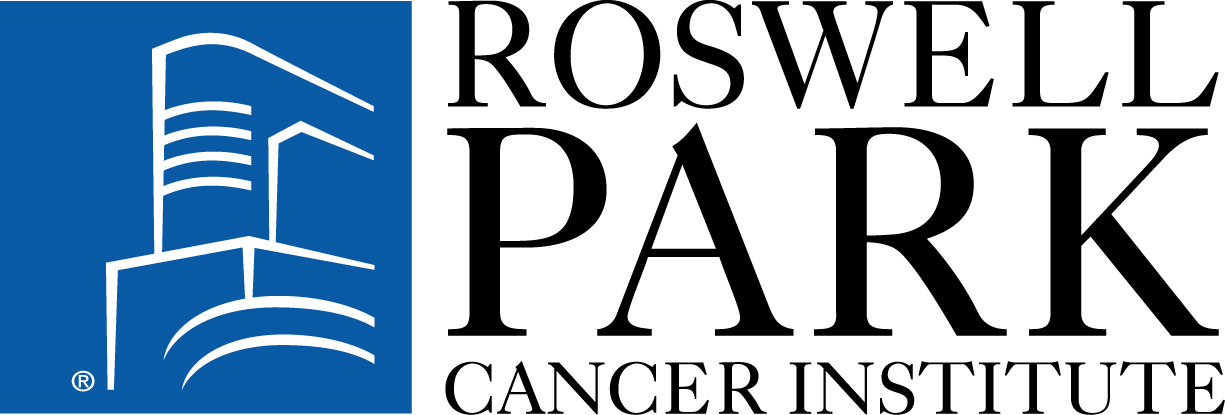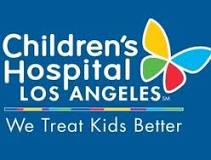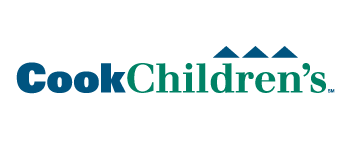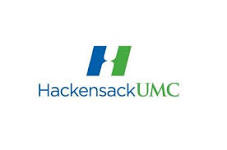Fludarabine-based Conditioning for Severe Aplastic Anemia (BMT CTN 0301)
| Status: | Completed |
|---|---|
| Conditions: | Anemia |
| Therapuetic Areas: | Hematology |
| Healthy: | No |
| Age Range: | Any - 65 |
| Updated: | 10/29/2017 |
| Start Date: | January 2006 |
| End Date: | January 2016 |
Fludarabine-based Conditioning for Allogeneic Marrow Transplantation From HLA-compatible Unrelated Donors in Severe Aplastic Anemia (BMT CTN #0301)
The purpose of the current study is to continue to optimize conditioning regimens in
high-risk patients with severe aplastic anemia transplanted with marrow from HLA-compatible
unrelated donors. Specifically, the study will determine whether the addition of fludarabine
to the conditioning regimen previously described by Deeg et al. will permit a reduction in
the CY dose, to a point where sustained hematopoietic engraftment and survival are maintained
(or improved), while the frequency of major regimen-related toxicity (RRT) and early deaths
is reduced.
high-risk patients with severe aplastic anemia transplanted with marrow from HLA-compatible
unrelated donors. Specifically, the study will determine whether the addition of fludarabine
to the conditioning regimen previously described by Deeg et al. will permit a reduction in
the CY dose, to a point where sustained hematopoietic engraftment and survival are maintained
(or improved), while the frequency of major regimen-related toxicity (RRT) and early deaths
is reduced.
BACKGROUND:
Aplastic anemia (AA) remains a life-threatening illness. Treatment options include supportive
care (transfusions, growth factors, etc.), immunosuppression therapy and stem cell
transplantation. Only the latter two have favorably impacted the natural history of the
disease. The prognosis of AA patients, particularly severe aplastic anemia (SAA), as defined
by Camitta et al., who fail to respond to immunosuppressive therapy (IS) or who relapse after
an initial response to IS is poor. Although many of these patients can be supported in the
short term with growth factors, transfusions and possibly rechallenged successfully with IS,
the cumulative morbidity and mortality from infection, hemorrhage or transfusion-related
complications is substantial.
While allogeneic bone marrow transplantation is potentially curative in AA, no more than 25%
of patients have a human leukocyte antigen (HLA)-identical sibling donor. Cyclophosphamide
(CY)-antithymocyte globulin (ATG) has been recommended as the preparative regimen of choice
in sibling donor transplants. Results of bone marrow transplantation from alternative donors,
such as matched unrelated donors and mismatched related donors in AA patients who have failed
IS, have largely been unsatisfactory. The cyclophosphamide-ATG conditioning regimen has
proved inadequate in ensuring engraftment in allogeneic transplants from matched, unrelated
donors for AA. This was the major reason why total body radiation (TBI) has been added to the
conditioning regimen.
Graft failure is a very serious and frequently life-threatening or fatal event following
matched unrelated donor (MUD) allografts in aplastic anemia. It is an immunologically
mediated event. Risk factors for graft failure include the use of HLA nonidentical or
unrelated donors, a poor marrow nucleated cell dose as well as prolonged transfusional
support prior to BMT (which increases the probability of patient sensitization to multiple
antigens). While some patients may achieve autologous hematopoietic recovery, prolonged
pancytopenia is common and infection-related morbidity and mortality are very substantial.
Reconditioning for a second allograft from the same or a different donor is frequently not
successful. While the addition of TBI and intensive pre-transplant conditioning has led to a
sizable improvement in engraftment rates, this has come with a price, particularly in adult
patients. Transplant-related toxicity has been a major and frequent problem.
Radiation-induced pulmonary toxicity in particular has been common, usually in the form of
diffuse alveolar damage or diffuse interstitial pneumonitis. In addition, Graft Versus Host
Disease (GVHD)-related morbidity and mortality in these patients have also been substantial.
DESIGN NARRATIVE:
The study is a prospective Phase I/II dose optimization study. All patients are given a fixed
dose of ATG (either thymoglobulin: 3 mg/kg IV daily x 3 or ATGAM 30 mg/kg IV daily x 3, on
Days -4 to -2), Fludarabine (30 mg/m^2 IV daily x 4, on Days - 5 to -2), and TBI (200 cGy
(centigray) from a linear accelerator at less than 20 cGy/min on Day -1). The starting CY
dose will be 150 mg/kg (50 mg/kg intravenously daily, Days -4 to -2), and will be
de-escalated depending on engraftment and toxicity. The Phase I portion of the trial (maximum
of 24-27 patients) tests each of four dose levels of CY for adequate safety and graft
retention. The Phase II portion of the trial refines the dose selection and allocates an
additional 70 patients to the optimal dose, at which two-year post-transplant survival will
be assessed. The combined enrollment in Phase I and II will total 94 patients.
The study is a prospective single-arm Phase I/II dose-selection and evaluation study. The
study will seek the optimal dose level of CY based on assessments of graft failure, toxicity
and early death during 100 days of follow-up post-transplant. A brief synopsis is given
below.
Phase I - Test Each Dose for Adequate Safety and Graft Retention
1. Proceed from the highest dose (150 mg/kg CY) to the lowest dose (0 mg/kg CY), treating a
minimum of six patients at each dose.
2. Evaluate the 100-Day outcomes for toxicity, death and graft failure on each patient
enrolled at the current dose, or until stopping criteria are met.
3. If there are three or more graft failures at the current dose, the current dose and all
lower doses are closed to further enrollment.
4. If there are five or more severe regimen-related toxicities and/or early deaths at the
current dose, the current dose is closed to further enrollment, and the next lower dose
is tested.
5. Dose de-escalation ceases once all four doses are tested or closed to further
enrollment.
Phase II - Refine Dose Selection and Allocate Patients to the Optimal Dose
1. Treat each newly enrolled patient at the most desirable of the dose levels remaining
open to enrollment. This can involve de-escalation, escalation, or no change in dose.
2. As each patient completes the observation period, evaluate the 100-Day outcomes for
graft failure, toxicity and/or early death for this patient, or until stopping criteria
are met.
3. If there are excess (according to the criteria in Table 5.8) graft failures, that
patient's dose and all lower doses are closed to further enrollment.
4. If there are excess (according to the criteria in Table 5.8) toxicities and/or early
deaths, that patient's dose is closed to further enrollment.
5. Re-evaluate the desirability of the current dose level based on the 100-Day outcomes for
toxicity and/or early death and graft failure.
6. Repeat steps 1-5 until 54 patients are enrolled in Phase II, or all dose levels are
closed to further enrollment.
Dosage Levels for CY:
3 Days (Day -4, -3, -2): Dose of 50 mg/kg/day; total dose of 150 mg/kg; dose level 3
2 Days (Day -3, -2): Dose of 50 mg/kg/day; total dose of 100 mg/kg; dose level 2
1 Day (Day -2): Dose of 50 mg/kg/day; total dose of 50 mg/kg; dose level 1
0 Days (None): No dose; no total dose; dose level 0
There may be wait periods between enrollment of successive patients and/or cohorts for
endpoint assessment. Under these circumstances, the final decision about waiting versus
treating the patient off study will be made at the local transplant center.
Aplastic anemia (AA) remains a life-threatening illness. Treatment options include supportive
care (transfusions, growth factors, etc.), immunosuppression therapy and stem cell
transplantation. Only the latter two have favorably impacted the natural history of the
disease. The prognosis of AA patients, particularly severe aplastic anemia (SAA), as defined
by Camitta et al., who fail to respond to immunosuppressive therapy (IS) or who relapse after
an initial response to IS is poor. Although many of these patients can be supported in the
short term with growth factors, transfusions and possibly rechallenged successfully with IS,
the cumulative morbidity and mortality from infection, hemorrhage or transfusion-related
complications is substantial.
While allogeneic bone marrow transplantation is potentially curative in AA, no more than 25%
of patients have a human leukocyte antigen (HLA)-identical sibling donor. Cyclophosphamide
(CY)-antithymocyte globulin (ATG) has been recommended as the preparative regimen of choice
in sibling donor transplants. Results of bone marrow transplantation from alternative donors,
such as matched unrelated donors and mismatched related donors in AA patients who have failed
IS, have largely been unsatisfactory. The cyclophosphamide-ATG conditioning regimen has
proved inadequate in ensuring engraftment in allogeneic transplants from matched, unrelated
donors for AA. This was the major reason why total body radiation (TBI) has been added to the
conditioning regimen.
Graft failure is a very serious and frequently life-threatening or fatal event following
matched unrelated donor (MUD) allografts in aplastic anemia. It is an immunologically
mediated event. Risk factors for graft failure include the use of HLA nonidentical or
unrelated donors, a poor marrow nucleated cell dose as well as prolonged transfusional
support prior to BMT (which increases the probability of patient sensitization to multiple
antigens). While some patients may achieve autologous hematopoietic recovery, prolonged
pancytopenia is common and infection-related morbidity and mortality are very substantial.
Reconditioning for a second allograft from the same or a different donor is frequently not
successful. While the addition of TBI and intensive pre-transplant conditioning has led to a
sizable improvement in engraftment rates, this has come with a price, particularly in adult
patients. Transplant-related toxicity has been a major and frequent problem.
Radiation-induced pulmonary toxicity in particular has been common, usually in the form of
diffuse alveolar damage or diffuse interstitial pneumonitis. In addition, Graft Versus Host
Disease (GVHD)-related morbidity and mortality in these patients have also been substantial.
DESIGN NARRATIVE:
The study is a prospective Phase I/II dose optimization study. All patients are given a fixed
dose of ATG (either thymoglobulin: 3 mg/kg IV daily x 3 or ATGAM 30 mg/kg IV daily x 3, on
Days -4 to -2), Fludarabine (30 mg/m^2 IV daily x 4, on Days - 5 to -2), and TBI (200 cGy
(centigray) from a linear accelerator at less than 20 cGy/min on Day -1). The starting CY
dose will be 150 mg/kg (50 mg/kg intravenously daily, Days -4 to -2), and will be
de-escalated depending on engraftment and toxicity. The Phase I portion of the trial (maximum
of 24-27 patients) tests each of four dose levels of CY for adequate safety and graft
retention. The Phase II portion of the trial refines the dose selection and allocates an
additional 70 patients to the optimal dose, at which two-year post-transplant survival will
be assessed. The combined enrollment in Phase I and II will total 94 patients.
The study is a prospective single-arm Phase I/II dose-selection and evaluation study. The
study will seek the optimal dose level of CY based on assessments of graft failure, toxicity
and early death during 100 days of follow-up post-transplant. A brief synopsis is given
below.
Phase I - Test Each Dose for Adequate Safety and Graft Retention
1. Proceed from the highest dose (150 mg/kg CY) to the lowest dose (0 mg/kg CY), treating a
minimum of six patients at each dose.
2. Evaluate the 100-Day outcomes for toxicity, death and graft failure on each patient
enrolled at the current dose, or until stopping criteria are met.
3. If there are three or more graft failures at the current dose, the current dose and all
lower doses are closed to further enrollment.
4. If there are five or more severe regimen-related toxicities and/or early deaths at the
current dose, the current dose is closed to further enrollment, and the next lower dose
is tested.
5. Dose de-escalation ceases once all four doses are tested or closed to further
enrollment.
Phase II - Refine Dose Selection and Allocate Patients to the Optimal Dose
1. Treat each newly enrolled patient at the most desirable of the dose levels remaining
open to enrollment. This can involve de-escalation, escalation, or no change in dose.
2. As each patient completes the observation period, evaluate the 100-Day outcomes for
graft failure, toxicity and/or early death for this patient, or until stopping criteria
are met.
3. If there are excess (according to the criteria in Table 5.8) graft failures, that
patient's dose and all lower doses are closed to further enrollment.
4. If there are excess (according to the criteria in Table 5.8) toxicities and/or early
deaths, that patient's dose is closed to further enrollment.
5. Re-evaluate the desirability of the current dose level based on the 100-Day outcomes for
toxicity and/or early death and graft failure.
6. Repeat steps 1-5 until 54 patients are enrolled in Phase II, or all dose levels are
closed to further enrollment.
Dosage Levels for CY:
3 Days (Day -4, -3, -2): Dose of 50 mg/kg/day; total dose of 150 mg/kg; dose level 3
2 Days (Day -3, -2): Dose of 50 mg/kg/day; total dose of 100 mg/kg; dose level 2
1 Day (Day -2): Dose of 50 mg/kg/day; total dose of 50 mg/kg; dose level 1
0 Days (None): No dose; no total dose; dose level 0
There may be wait periods between enrollment of successive patients and/or cohorts for
endpoint assessment. Under these circumstances, the final decision about waiting versus
treating the patient off study will be made at the local transplant center.
Inclusion Criteria:
- Patients up to 65 years of age at time of registration with a diagnosis of SAA; SAA is
defined as follows:
1. Bone marrow cellularity less than 25% or marrow cellularity less than 50% but
with less than 30% residual hematopoietic cells
2. Two out of three of the following (in peripheral blood): neutrophils less than
0.5 x 10^9/L; platelets less than 20 x 10^9/L; reticulocytes less than 20 x
10^9/L
- Patient must have an available unrelated donor with a 7/8 or 8/8 match for HLA-A, B,
C, and DRB1 antigen; typing is by DNA techniques: intermediate resolution for A, B,
and C, and high resolution for DRB1; HLA-DQ typing is recommended but will not count
in the match
- Patient and/or legal guardian able to provide signed informed consent
- Matched unrelated donor must consent to provide a marrow allograft
- Patients with adequate organ function as measured by:
1. Cardiac: left ventricular ejection fraction at rest must be greater than 40% or
shortening fraction greater than 20%
2. Hepatic: serum bilirubin less than 2x upper limit of normal for age as per local
laboratory) (with the exception of isolated hyperbilirubinemia due to Gilbert's
syndrome), alanine transaminase (ALT) and aspartate transaminase (AST) less than
4x upper limit of normal for age (as per local laboratory)
3. Renal: serum creatinine less than 2x upper limit of normal for age (as per local
laboratory)
4. Pulmonary: Forced expiratory volume in 1 second (FEV1), forced vital capacity
(FVC), and carbon monoxide diffusing capacity (DLCO) (corrected for Hb) greater
than 50% predicted; for patients in which pulse oxymetry is performed, O2
saturation greater than 92%
- Diagnosis of Fanconi anemia must be excluded in patients younger than 18 years of age
by diepoxybutane testing on peripheral blood or comparable testing on marrow.
Exclusion Criteria:
- Clonal cytogenetic abnormalities associated with myelodysplastic syndrome (MDS) or
acute myeloid leukemia (AML) on marrow examination
- Diagnosis of other "congenital" aplastic anemias such as: Diamond-Blackfan;
Shwachman-Diamond; congenital amegakaryocytosis
- Symptomatic or uncontrolled cardiac failure or coronary artery disease
- Karnofsky performance status less than 60% or Lansky less than 40% for patients
younger than 16 years old
- Uncontrolled bacterial, viral or fungal infections (currently taking medication and
progression of clinical symptoms)
- Seropositive for the human immunodeficiency virus (HIV)
- Pregnant (positive total HCG) or breastfeeding
- Presence of large accumulation of ascites or pleural effusions, which would be a
contraindication to the administration of methotrexate for GVHD prophylaxis
- Known severe or life-threatening allergy or intolerance to ATG or cyclosporine/
tacrolimus
- Planned administration of alemtuzumab (Campath-1H) or other investigational agents as
alternative agent for GVHD prophylaxis
- Concomitant enrollment in a Phase I study
- Positive patient anti-donor lymphocyte crossmatch in HLA-A or B mismatched
transplants; the definition of match is in Section 2.2.1; the crossmatch would only
apply to mismatches at HLA-A or B, not DRB1 or HLA-C
- Prior allogeneic marrow or stem cell transplantation
- Patients with prior malignancies except resected basal cell carcinoma or treated
carcinoma in-situ; cancer treated with curative intent less than 5 years previously
will not be allowed unless approved by the Medical Monitor or Protocol Chair; cancer
treated with curative intent more than 5 years previously will be allowed
We found this trial at
22
sites
Click here to add this to my saved trials
Roswell Park Cancer Institute Welcome to Roswell Park Cancer Institute (RPCI), America's first cancer center...
Click here to add this to my saved trials
3333 Burnet Avenue # Mlc3008
Cincinnati, Ohio 45229
Cincinnati, Ohio 45229
1-513-636-4200

Cincinnati Children's Hospital Medical Center Patients and families from across the region and around the...
Click here to add this to my saved trials
Childrens Hospital Los Angeles Children's Hospital Los Angeles is a 501(c)(3) nonprofit hospital for pediatric...
Click here to add this to my saved trials
Univ of Minnesota With a flagship campus in the heart of the Twin Cities, and...
Click here to add this to my saved trials
3181 Southwest Sam Jackson Park Road
Portland, Oregon 97239
Portland, Oregon 97239
503 494-8311

Oregon Health and Science University In 1887, the inaugural class of the University of Oregon...
Click here to add this to my saved trials
1100 Fairview Avenue North
Seattle, Washington 98109
Seattle, Washington 98109
(206) 667-5000

Fred Hutchinson Cancer Research Center At Fred Hutchinson Cancer Research Center, our interdisciplinary teams of...
Click here to add this to my saved trials
University of Michigan The University of Michigan was founded in 1817 as one of the...
Click here to add this to my saved trials
Children's Healthcare of Atlanta Whether treating a toddler in an emergency or supporting a teen...
Click here to add this to my saved trials
Click here to add this to my saved trials
1500 East Duarte Road
Duarte, California 91010
Duarte, California 91010
626-256-HOPE (4673)

City of Hope National Medical Center City of Hope is dedicated to making a difference...
Click here to add this to my saved trials
Duke Univ Med Ctr As a world-class academic and health care system, Duke Medicine strives...
Click here to add this to my saved trials
Cook Children's Medical Center Cook Children's Health Care System is a not-for-profit, nationally recognized pediatric...
Click here to add this to my saved trials
Hackensack University Medical Center Hackensack University Medical Center, part of the Hackensack University Health Network,...
Click here to add this to my saved trials
Click here to add this to my saved trials
Click here to add this to my saved trials
Memorial Sloan Kettering Cancer Center Memorial Sloan Kettering Cancer Center — the world's oldest and...
Click here to add this to my saved trials
Phoenix Children's Hospital Phoenix Children's Hospital has provided hope, healing, and the best healthcare for...
Click here to add this to my saved trials
Click here to add this to my saved trials
Click here to add this to my saved trials
Click here to add this to my saved trials
Click here to add this to my saved trials









